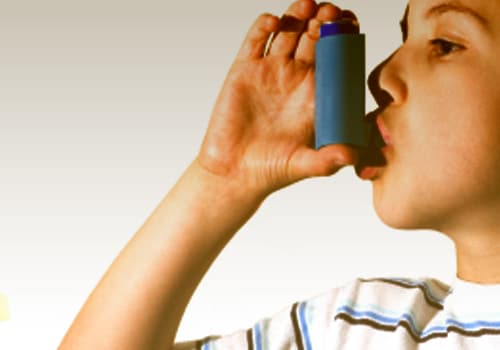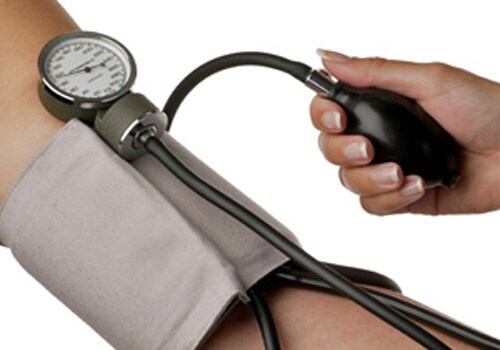-

Introduction
Cigarette smoking kills nearly about 420,000 people a year, making it more lethal than AIDS, accidents, homicides, suicides, drug overdoses, and fire. Smokers are also inhaling other chemicals including cyanide, benzene, formaldehyde, methanol (wood alcohol), acetylene (the fuel used in torches), and ammonia. Smoke also contains nitrogen oxide and carbon monoxide, which are harmful gases.
-

What are the risks?
1. Heart disease
Smokers in their thirties and forties have a heart attack rate that is five times higher than their nonsmoking peers. Cigarette smoking may be directly responsible for at least 20% of all deaths from heart disease, or about 120,000 deaths annually. Smoking cigars may also increase the risk of early death from heart disease, although evidence is much stronger for cigarette smoking.
Its damaging effects on the heart are multifold:
- Smoking lowers HDL levels (the so-called good cholesterol) even in adolescents.
- It causes deterioration of elastic properties in the aorta, the largest blood vessel in the body, and increases the risk for blood clots. It increases the activity of the sympathetic nervous system (which regulates the heart and blood vessels).
- Tobacco smoke may increase cardiovascular disease in women through an effect on hormones that causes oestrogen deficiency.
Smoking is the cause of 85% of all cases of lung cancer in 2000, account for 28% of all cancer deaths. Quitting reduces the risk for lung cancer, even well into middle age.
Smoking and smokeless tobacco also cause between 60% and 93% of cancers of the throat, mouth, and oesophagus. Smokers also have higher rates of leukaemia and cancers of the kidney, stomach, bladder, and pancreas. About 30% of cervical cancers have been attributed to both active and passive smoking. Lung cancer patients who survive and continue to smoke face a serious risk of developing a second tobacco-related tumour within ten years.
3. Dementia and neurologic diseases
People who smoke a pack a day have almost two and a half times the risk of stroke as non-smokers. The best current research suggesting that smoking makes little difference in the risk for Alzheimer's, and if it does, the risk for dementia is slightly higher in smokers. Certainly, smoking can affect blood vessels in the brain as it does in the heart, increasing the risk for dementia from small or major strokes.
4. Lung disease
Smoking is associated with a higher risk for nearly all major lung diseases, including pneumonia, flu, bronchitis, and emphysema. There is also a link between smoking and increased asthma symptoms. Heavy smokers with asthma are also more likely to seek emergency treatment for their condition during times of heavy ozone pollution.
5. Female infertility and pregnancy
Studies have now linked cigarette smoking to many reproductive problems. Women who smoke pose a greater danger not only to their own reproductive health but, if they smoke during pregnancy, to their unborn child. Some of these risks include the following:
- Greater risk for infertility in women.
- Greater risk for ectopic pregnancy and miscarriage.
- Greater risk for stillbirth, prematurity, and low-birth weight.
- Smoking reduces folate levels, a B vitamin that is important for preventing birth defects.
- Women who smoke may pass genetic mutations that increase cancer risks to their unborn babies.
6. Male sexuality and reproduction
Men's sexual and reproductive health is not immune from the effects of smoking.- Heavy smoking is frequently cited as a contributory factor in impotence because it decreases the amount of blood flowing into the penis.
- Smoking also reduces sperm density and their motility, increasing the risk for infertility.
Children of smoking mothers are more likely to have more motor control problems, perception impairments, attention disabilities, and social problems than children of non-smoking mothers. Some reasons for these associations have been suggested:
- Women who breast feed and smoke pass nicotine by-products to their babies, which may contribute to these problems.
- Women smokers tend to be less educated than women non-smokers, which may cause increased stress at home.
- Smoking mothers and their children may share certain inherited psychologic factors, such as depression, which cause addictive and behavioural problems that are unrelated to smoking itself.
Smoking has many negative effects on bones and joints:
- Smoking impairs formation of new bone and women who smoke are at high risk for osteoporosis.
- Postmenopausal women who smoke have 17% greater risk for hip fracture at age 60, a 41% greater risk at 70, and a 108% greater risk at age 90.
- Smokers are more apt to develop degenerative disorders and injuries in the spine.
- Smokers have more trouble recovering from spinal surgery.
- Smokers whose jobs involve lifting heavy objects are more likely to develop low back pain than non-smokers.
- In women, smoking may also pose a small increased risk for developing rheumatoid arthritis.
- Smoking lowers HDL levels (the so-called good cholesterol) even in adolescents.
-

What are the specific effects of parental smoking on children?
An estimated four million children a year fall ill from exposure to second-hand smoke. Parental smoking has been shown to affect the lungs of infants as early as the first two to 10 weeks of life. A number of studies have reported associations between smoking parents and childhood illnesses.
- Parental smoking is believed to increase the risk for lower respiratory infections (asthma, bronchitis, and pneumonia) by 50%. Environmental smoking is thought to be responsible for a large number of cases of lower respiratory tract infections every year. It also worsens the condition of children who have existing asthma.
- Smoking in pregnant women and new mothers is strongly linked to sudden infant death syndrome (SIDS).
- Maternal smoking is believed to be related to 37% of the cases of childhood meningococcal disease, an uncommon but potentially fatal infection.
- Parental smoking has also been linked to ear infections and eczema.
- Maternal smoking has been linked to abnormal lung function in children; the defects persist throughout life.
- Parental smoking is believed to increase the risk for lower respiratory infections (asthma, bronchitis, and pneumonia) by 50%. Environmental smoking is thought to be responsible for a large number of cases of lower respiratory tract infections every year. It also worsens the condition of children who have existing asthma.
-

What are the methods to quit smoking?
At this time the most effective methods for quitting is a combination of nicotine replacement products and the antidepressant drug bupropion bolstered by counselling. After a year only about 4% of smokers who quit without any outside help succeed. The primary obstacle in trying to quit alone is making the behavioural changes necessary to eliminate the habits associated with smoking. Excellent books, tapes, and manuals are available and are strongly recommended to help people who want to quit without other assistance.
1. Nicotine replacement
Nicotine replacement products provide low doses of nicotine that do not contain the contaminants found in smoke. They are proving to be twice as helpful as other standard quitting methods. Replacement products include nicotine patches, gums, nasal sprays, and inhalers. Side effects of any nicotine replacement product may include headaches, nausea, and other gastrointestinal problems. People often experience sleeplessness in the first few days, particularly with the patch, but the insomnia usually passes. Patients using very high doses are more likely to experience symptoms, and reducing the dose can prevent them. Certain individuals like people with heart disease, pregnant women, small children may need to avoid nicotine replacement products.
Nicotine patches: Nicotine patches, or transdermal nicotine, can be an effective way to quit smoking. The quit rate for patch users is around 20% after six months. Nicotine patches are available over the counter, but it is best to consult a doctor before using them, particularly people with any medical problems.
Nicotine gum: Nicotine gum (Nicorette), available over the counter, has also been effective for a number of people. Some prefer it to the patch because they can control the nicotine dosage and chewing satisfies the oral urge. Long-term dependence may be a problem with this method.
Nicotine inhaler: The nicotine inhaler resembles a plastic cigarette holder. It comes with a number of nicotine cartridges which are inserted into the inhaler. It has some specific advantages over other slower nicotine replacement products:
Nicotine nasal spray: The nasal spray satisfies immediate cravings by providing doses of nicotine rapidly, and thus may play a useful role in conjunction with slower acting nicotine replacement therapies.
Nicotine tablet: A nicotine tablet that is held under the tongue is also very useful.
2. Alternative and ther Methods for Quitting
Scheduled reduction: One study showed that people who used a systematic withdrawal schedule were twice as likely to quit as those who went cold turkey. The procedure involves the following steps:
- Divide the number of minutes per day awake by the number of daily cigarettes; the result is the minute-long wait between smokes.
- Set up a schedule with time intervals based on this result and using a timer, smoke only at those intervals; if the "cigarette appointment" is missed by more than five minutes, the smoker must skip that cigarette.
- The following week, one-third fewer cigarettes are used and the smoking time is recalculated based on the lower number.
- During the third week the count is again reduced by a third, and the smoker quits in the fourth week.
- Change the daily schedule as much as possible. Eat at different times or eat many small meals instead of three large ones, sit in a different chair, rearrange the furniture.
- Find other ways to close a meal. Play a tape or CD, eat a piece of fruit, get up and make a phone call, or take a walk (a good distraction that burns calories as well).
- Substitute oral habits (eat celery, chew sugarless gum, suck on a cinnamon stick.) Go to public places and restaurants where smoking is prohibited or restricted.
- Set short-term quitting goals and reward yourself when they are met, or every day put the money normally spent on cigarettes in a jar and buy something pleasurable at the end of a predetermined period of time.
- Find activities that focus the hands and mind but are not taxing or fattening: computer games, solitaire, knitting, sewing, whittling, crossword puzzles.
- Avoid heavy drinking of alcohol, caffeine, or other stimulants or mood altering substances.
- Divide the number of minutes per day awake by the number of daily cigarettes; the result is the minute-long wait between smokes.
-

What is the physical benefits after quitting?
Time after last cigarette Physical Response 20 minutes Blood pressure and pulse rate return to normal 8 hours Levels of carbon monoxide and oxygen in the blood return to normal 24 hours Chance of heart attack decreases 48 hours Nerve endings start to regrow; ability to taste and smell increases 72 hours Bronchial tubes relax; lung capacity increases 2 weeks to 3 months Improved circulation; lung function increases up to 30%. 1 to 9 months Decreased incidence of coughing, sinus infection, fatigue, and shortness of breath; regrowth of cilia in lungs, increasing the ability to handle mucus, clean the lungs, and reduce chance of infection; overall energy level increases -

What are the withdrawal effects of smoking?
Withdrawal symptoms begin as soon as four hours after the last cigarette, generally peak in intensity at three to five days, and disappear after two weeks. They include both physical and mental symptoms. During the quitting process people should consider the physical symptoms like tingling in the hands and feet, sweating, intestinal disorders (cramps, nausea), and headache.
Tension and craving build up during periods of withdrawal, sometimes to a nearly intolerable point. Nearly every moderate to heavy smoker experiences strong emotional and mental responses like feelings of being an infant, temper tantrums, intense needs, feelings of dependency, a state of near paralysis, insomnia, mental confusion, vagueness, irritability, anxiety to withdrawal.

















